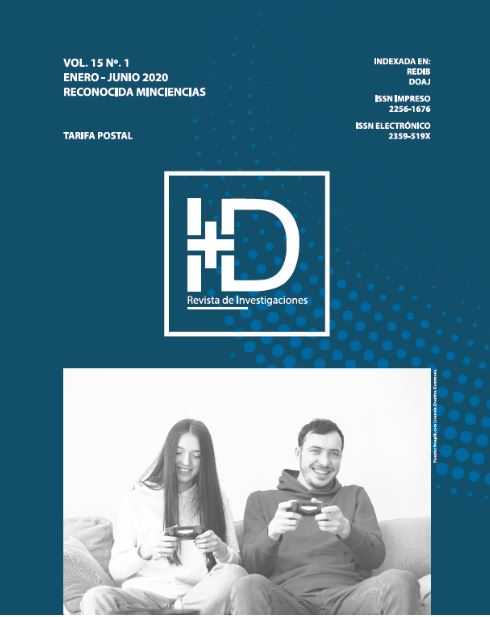The influence of ligth on habitat design and feelings of the population deprived of liberty: the case of Cómbita, Boyacá
DOI:
https://doi.org/10.33304/revinv.v15n1-2020012Keywords:
Prison, feeling, family, freedom, lightAbstract
This article shows the result of the investigation of a case study in the UTE, Unidad de Tratamiento Especial, (Special Treatment Unit) of the Cómbita prison -located in Boyacá- in the maximum and medium security sector. The objective of the project was to identify the light factors that affect feelings, in order to propose modifications to the design of the prison habitat, as a strategy in the resocialization and resignification processes of the condemned population. The initial phase corresponded to the methodological formulation. In the definition of the problem, during which the population and the place were identified, three main concepts were established: light, feelings, and habitat. Based on this information, techniques and instruments for data collection were formulated and applied. The information obtained was analyzed in NVivo 12 software. During the research process the Design Thinking model was applied, and the empathy map and Customer Journey Maps tools were used.Downloads
References
Asamblea General de las Naciones Unidas. (10 de Diciembre de 1948). Declaración universal de los Derechos Humanos. Declaración universal de los Derechos Humanos. Paris, Francia.
Bello, J. A. & Parra, G. (2015). Cárceles de la muerte: necropolitica y sistema cárcelario en Colombia. Revista Javeriana, (82), 365-391.
Castillo, R. L., Cifuentes, S. V., Briceño, M. L., & Noriega, K. R. (2014). Características del comportamiento suicida en cárceles de Colombia. Criminalidad, 56(1), 83-95.
Comité Internacional de la Cruz Roja. (21 de Marzo de 2018). Cárceles en Colombia: una situación insostenible. CICR. Obtenido de CICR: https://www.icrc.org/es/document/carceles-en-colombia-una-situacion-insostenible
Congreso de Colombia. (1993). Ley 65 del 19 de Agosto de 1993. En Código penitenciario y Carcelario (pág. Artículo 5 y 10). Colombia: Republica de Colombia.
Congreso de Colombia. Ley 599. (2000). Colombia: Congreso de Colombia.
Cortés, A. B. (2010). Luz y Emociones: Estudio sobre la Influencia de la Iluminación Urbana en las Emociones; tomando como base el Diseño Emocional. Barcelona: Universidad Politécnica de Cataluña.
Ferreyra, A. (2014). Metodología de la investigación. Buenos Aires: Editorial Brujas.
INPEC, I. N. (2019). Informe estadístico. Colombia: Minijusticia.
Instituto Nacional Penitenciario y Carcelario. (31 de Agosto de 2018). INPEC. Obtenido de INPEC: http://www.inpec.gov.co/atencion-al-ciudadano/glosario
Fundación Acción Interna, (2013). Acción interna un camino a la reconciliación y resocialización. Obtenido de Acción interna un camino a la reconciliación y resocialización: http://fundacionaccioninterna.org/?gclid=CjwKCAjwwo7cBRBwEiwAMEoXPE5eSZgSvwt0XEHM6Yx0-El-uUj1qgQPTQFrQ5vXMPsTrC8YIXs8qRoCtLoQAvD_BwE
Kerpen, S., Marshall, D., Whitehead, C., y Ellison, G., An approach to the analysis and redesign of an outdated psychiatric ward. En P. Suedfeld y J.A. Russell (Eds) The behavioral basis of design. Book 1: Selected papers. Pennsylvania: Dowden, Hutchinson &Ross, Inc., 1976.
Matthews, R. (2011). Una propuesta realista de reforma para las prisiones en Latinoamérica. Política criminal, 296-338.
Quivy, R. (1992). Manual de investigación en Ciencias Sociales. México, D.F.: Limusa Noriega.
Santos, B. (2014). Derechos Humanos, democracia y desarrollo. Bogotá: DDe Justicia.
Torán, M. M. (2018). Estudio de las emociones desde una perspectiva de diseño de servicios: dos casos sobre turismo. Designa, 54-74.
Valenzuela, J. R. (25/05/2015). El uso de la iluminación como generadora de teatralidad en la arquitectura. Revista Uniandes, (16), 194-203.












